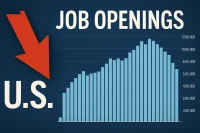Presidential Executive Order Confirms Major Tariff Increase
Steel and aluminum tariffs 2025 have surged to 50% following President Biden’s executive order. Announced during his visit to Pennsylvania, this increase fulfills a key promise to support local workers and the manufacturing sector. The administration confirmed that the tariffs will proceed as planned, with no suspensions or changes expected.
Economic Implications of Heightened Tariffs
The 50% tariff increase represents a substantial shift in trade policy with far-reaching economic consequences. This protective measure aims to shield domestic steel and aluminum producers from foreign competition while potentially raising costs for industries that rely heavily on these materials.
Impact on American Manufacturing
American steel and aluminum producers stand to benefit significantly from these heightened tariffs. The increased protection from foreign imports is expected to boost domestic production, potentially creating thousands of new jobs in manufacturing regions like Pennsylvania, Ohio, and Michigan.
Global Trade Repercussions
These substantial tariff increases will inevitably affect international trade relationships. Major steel and aluminum exporters to the United States, including Canada, Brazil, South Korea, and various European nations, may face significant economic pressure. Some analysts predict potential retaliatory measures from affected countries, which could escalate into broader trade tensions.
Learn more about global trade dynamics at the World Trade Organization
Industry Response to Tariff Changes

Steel Industry Reactions
The American steel industry has largely welcomed these protective measures. Industry leaders argue that the tariffs will help combat unfair trade practices and create a more level playing field for domestic producers who maintain higher labor and environmental standards.
“These tariffs provide critical protection against subsidized foreign steel flooding our markets,” noted a spokesperson from the American Iron and Steel Institute.
Manufacturing Sector Concerns
While steel producers celebrate, manufacturers who use steel as a primary input have expressed concerns about increased production costs. The automotive, construction, and appliance industries may face higher material expenses that could potentially be passed on to consumers.
Explore the latest economic analysis from the Peterson Institute for International Economics
Employment Implications in Manufacturing Regions
The tariff increase comes as welcome news for workers in steel-producing regions who have faced challenging economic conditions in recent decades. Pennsylvania, a crucial battleground state and traditional manufacturing hub, stands to see significant job protection and potential growth in the steel sector.
Job Market Analysis
Recent economic data suggests that protective trade measures could preserve thousands of jobs in the metals manufacturing sector. For workers in Pennsylvania and similar regions, this represents a critical lifeline for local economies built around steel production.
Search for manufacturing jobs in your area on WhatJobs
Consumer Price Considerations
The downstream effects of these tariffs may eventually reach consumers. Products containing significant amounts of steel or aluminum—from automobiles to beverage cans—could see price increases as manufacturers adjust to higher material costs.
Price Impact Timeline
Economists suggest that consumer price impacts typically lag behind tariff implementation by 3-6 months as inventory cycles complete and new pricing structures take effect throughout supply chains.
Discover career opportunities in economics and trade policy on WhatJobs
International Response and Diplomatic Considerations
The administration’s decision signals a strong commitment to protecting American manufacturing, though it may complicate diplomatic and trade relationships. Several key trading partners have already expressed concerns about the increased tariffs.
Potential for Negotiations
Despite the firm stance on implementation, trade experts suggest that the door remains open for bilateral negotiations that could potentially create exemptions or modified terms for certain trading partners.
Find international trade compliance jobs on WhatJobs
FAQ Section
What exactly does the new executive order on steel and aluminum tariffs entail?
The executive order signed by President Biden increases tariffs on imported steel and aluminum to 50%. This steel aluminum tariffs increase represents a significant change in trade policy designed to protect domestic producers from foreign competition and support American manufacturing jobs, particularly in regions like Pennsylvania.
How will the steel aluminum tariffs increase affect American jobs?
The steel aluminum tariffs increase is expected to preserve and potentially create thousands of jobs in the domestic steel and aluminum production industries. Manufacturing regions in states like Pennsylvania, Ohio, and Michigan could see employment growth as domestic production becomes more competitive against imports.
Will consumers pay more for products due to the steel aluminum tariffs increase?
Yes, the steel aluminum tariffs increase will likely lead to higher prices for consumer goods that contain significant amounts of these metals. Products such as automobiles, appliances, construction materials, and even beverage containers may become more expensive as manufacturers pass increased material costs to consumers.
Which countries will be most affected by the steel aluminum tariffs increase?
Major exporters of steel and aluminum to the United States will feel the greatest impact from the steel aluminum tariffs increase. This includes countries such as Canada, Brazil, South Korea, Japan, and several European nations. These countries may consider retaliatory measures or seek exemptions through diplomatic channels.




